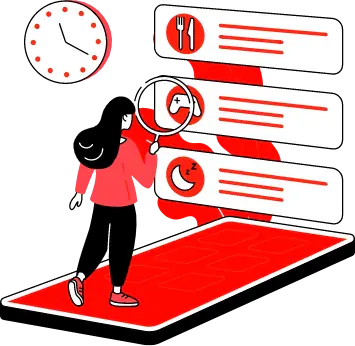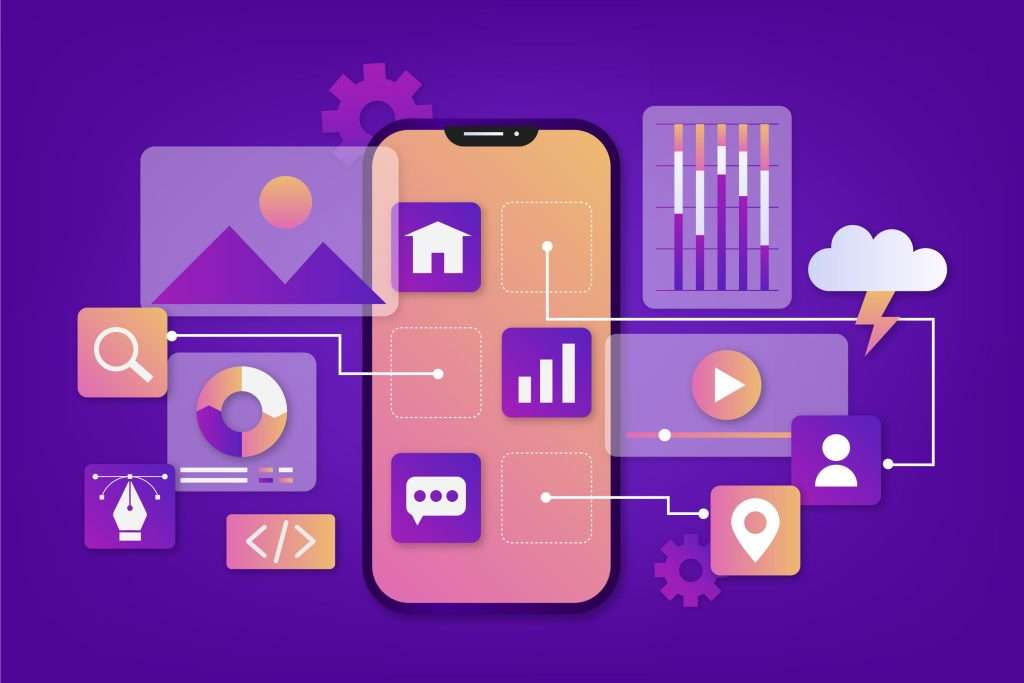Apps built with Flutter have emerged as a game-changer in the ever-changing field of app development, altering the way developers construct cross-platform applications. Flutter has garnered tremendous interest as an open-source UI software development toolkit endorsed by Google for its potential to shorten the development process and provide visually appealing and high-performance applications. This blog will look at the success stories of notable apps that use Flutter, as well as why developers are increasingly using this framework for their projects. Flutter has become synonymous with efficiency and creativity in the app development industry, because of its single codebase advantage and real-time development capabilities provided by its quick reload feature. Let’s go on a journey to find the engaging stories behind some of the most well-known apps built with Flutter and learn why it’s such a popular choice among developers globally. Decoding the power of Flutter The benefit of a Single Codebase in Apps using Flutter: The single codebase advantage of Flutter is a crucial feature that significantly simplifies the development process. Developers can build and manage a unified set of code, eliminating the need for distinct codebases for various platforms such as iOS, Android, web, and desktop. This not only saves time and effort but also reduces the likelihood of platform discrepancies. The use of a single codebase ensures that updates, upgrades, and bug fixes are consistently deployed, resulting in a more efficient and unified development workflow. Consequently, developers can focus on enhancing features rather than dealing with platform-specific code, leading to a clearer and more sustainable development cycle with easier maintenance. Real-time Updates for Apps made with Flutter: Flutter’s real-time update capability, often referred to as ‘hot reload,’ is a game-changer for developers. It enables them to make code changes and observe the consequences immediately without having to restart the entire application. This feature shortens the development cycle by providing a rapid and iterative testing environment. Developers can experiment with new UI/UX elements, fix errors on the fly, and fine-tune the application in real-time. The hot reload function not only increases productivity but also improves team cooperation by allowing changes to be discussed and validated immediately. This quick feedback loop helps create a more dynamic and responsive development process, aiding in troubleshooting, learning, and extending the functionality of your app. Flexibility and Adaptability in Apps Built with Flutter: Flutter provides a high level of flexibility and adaptability in the building of applications. The framework enables developers to construct visually attractive and expressive user interfaces that are tailored to the specific design needs of their applications. The ability to seamlessly integrate unique designs and animations provides a great level of creative freedom. Furthermore, Flutter’s versatility is demonstrated by its ability to run on a variety of platforms while maintaining consistent performance and appearance. Flutter delivers a uniform user experience whether the application is designed for mobile, web, or desktop. This versatility simplifies cross-platform application development, allowing developers to reach a larger audience without sacrificing quality or customer happiness. Popular Apps Built with Flutter: Here are the details of what Apps use Flutter primarily for their ability to expedite cross-platform development, allowing developers to create code once and deliver it on both the Android and iOS platforms. Google Ads Google Ads is a powerful advertising tool among apps that use Flutter, helping businesses engage their target audience through Internet advertising. Google Ads turned to Flutter for a solution to the difficulty of maintaining consistency and efficiency across several platforms. The one codebase functionality of Flutter removes the need for different development processes, offering a consistent user experience across iOS and Android. Flutter’s quick reload also has accelerated development processes, allowing for real-time code adjustments. This not only sped up the development process but also improved team collaboration, ultimately increasing the speed and user interface of the Google Ads app. Reflectly Reflectly is a journaling app among apps using Flutter that promotes mindfulness and personal improvement via daily reflections. They were looking for a cross-platform solution and Flutter emerged as the best option, with a single codebase, allowing easy deployment on iOS and Android. Reflectly was able to design an interesting and consistent user interface that aligned with the app’s fundamental objective because of the framework’s flexibility. Reflectly’s development team saw Flutter’s versatility as a critical solution to the difficulty of reaching a wide user base while maintaining a cohesive and visually appealing design. Square Square, a financial technology company that provides payment processing and business management solutions, was faced with the necessity for simultaneous updates across several platforms. By allowing real-time code adjustments, Flutter’s hot reload functionality proved invaluable in tackling this difficulty. This accelerated development and assured timely updates, which is critical for financial services software like Square. The quickness with which Flutter handled updates and adjustments contributed to the app’s dependability and responsiveness, which met the high standards necessary in the financial technology industry. Xianyu by Alibaba is one of the Apps Built with Flutter The complexity of managing parallel codebases for iOS and Android was a challenge for Xianyu, Alibaba’s mobile marketplace for buying and selling used products. Flutter stepped in as a solution, offering a uniform codebase that sped up development efforts. This not only made maintenance easier but also ensured a consistent user experience across platforms. The versatility of Flutter enabled Xianyu to provide a unified marketplace experience to users across both main mobile platforms, contributing to the app’s success and user satisfaction. Hamilton The acclaimed Broadway musical Hamilton had difficulties in offering consistent user interfaces for iOS and Android. However, by using Flutter as their framework, the Hamilton developers solved this problem by delivering a unified codebase for apps that use Flutter. Developers were able to design and maintain a consistent and visually appealing app experience across both platforms, ensuring that users using diverse devices had a seamless and entertaining experience. Flutter’s features substantially aided in optimizing the Hamilton app’s overall performance. The New York Times The New York Times is one of the apps made with Flutter, which provides users with breaking news and multimedia material, seeking a uniform and visually appealing layout on both iOS and Android. Flutter proved to be the solution by providing a cohesive design with a single codebase. This removed the difficulties involved with maintaining parallel codebases and enabled seamless upgrades and changes. Flutter’s adaptability and agility were critical in satisfying The New York Times’ goal of offering a consistent and delightful user experience across multiple platforms, eventually improving the app’s accessibility and usefulness. The Future of Flutter Flutter’s future trajectory is defined by its increasing community and robust developer support. The framework has fostered a thriving environment, with a growing community contributing to its progress. As Flutter gains traction, its impact on future apps built with Flutter is expected to be transformational. The framework’s adaptability, combined with its ability to effortlessly support cross-platform development, places it as a pioneer in influencing the future of app development. Flutter is more than a framework with an engaged and collaborative community; it is a dynamic force moving the industry toward more efficient, inventive, and cross-platform development processes. Flutter is set to leave an indelible impression on the world of app development as the community grows and new features are deployed in the coming years. Conclusion Finally, the success stories of prominent apps that use Flutter highlight the framework’s critical role in achieving cross-platform greatness. Flutter has continuously proved its capacity to simplify development, deliver a visually appealing user interface, and improve overall user experience; from industry heavyweights like Google Ads and Alibaba to new mindfulness apps like Reflectly. Flutter’s adaptability, as demonstrated by apps such as the official Hamilton app and Square’s payment solutions, underlines its position as an essential tool for developing high-performance and user-friendly experiences. The integration of the New York Times app with Flutter illustrates how the framework helps to better user experiences and dynamic content updates. As we browse these apps’ success stories, it becomes clear that Flutter is more than simply a framework; it is a catalyst for creativity, efficiency, and quality in the ever-changing app development field. Flutter’s influence is poised to define the future of cross-platform development, leaving a lasting imprint on the industry, thanks to a growing community and consistent support.
FAQs
Explore our frequently asked questions to get more clarity!
Flutter offers a single codebase for both Android and iOS, providing faster development, a hot reload feature for quick updates, and a rich widget library for a consistent and visually appealing user interface.
Yes, Flutter is suitable for large-scale applications. It provides good performance, and its reactive framework allows for the development of complex and feature-rich applications.
Flutter uses a single codebase for both Android and iOS, whereas native development involves separate codebases for each platform. Flutter also utilizes a unique set of widgets and has a hot reload feature for faster iteration.
Yes, Flutter is suitable for large-scale applications. It provides good performance, and its reactive framework allows for the development of complex and feature-rich applications.


